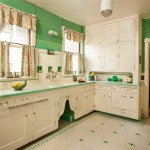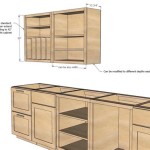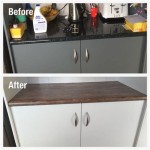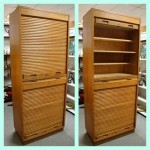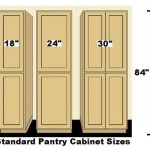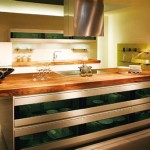Exploring the Latest Kitchen Cabinet Designs
The kitchen stands as a central hub in many homes, a space where meals are prepared, conversations are shared, and memories are created. As such, the design and functionality of the kitchen are paramount to the overall comfort and aesthetic appeal of the home. Kitchen cabinets, in particular, play a significant role, not only in providing essential storage but also in defining the style and character of the space. This article will explore various aspects of kitchen cabinet design, focusing on current trends, material options, and functional considerations.
Choosing the right kitchen cabinet design requires careful consideration of several factors. These include the overall style of the home, the available space, the budget, and the desired functionality. Understanding the various design options and their associated benefits can empower homeowners to make informed decisions that result in a kitchen that is both beautiful and practical.
Understanding Cabinet Styles and Construction
Kitchen cabinets are broadly categorized into three main styles: stock, semi-custom, and custom. Each style offers a different level of flexibility and personalization, catering to varying budgets and design preferences.
Stock cabinets are mass-produced in standard sizes and finishes. They are the most affordable option and are readily available at home improvement stores and online retailers. Stock cabinets are ideal for homeowners seeking a cost-effective solution or those with limited time for renovation projects. However, the limited selection of sizes and styles may restrict design possibilities.
Semi-custom cabinets offer a greater degree of customization compared to stock cabinets. They are typically made to order from a manufacturer's existing range of sizes, styles, and finishes. Semi-custom cabinets allow for modifications such as adjusting cabinet depth, adding decorative elements, or choosing from a wider selection of door styles and hardware. This option provides a balance between affordability and customization.
Custom cabinets are designed and built to the homeowner's exact specifications. This allows for complete control over every aspect of the cabinet design, from the dimensions and materials to the finish and hardware. Custom cabinets are the most expensive option but offer unparalleled flexibility and personalization. They are often the preferred choice for homeowners with unique space constraints or those seeking a truly bespoke kitchen design.
Beyond style, the construction of kitchen cabinets is crucial to their durability and longevity. Common construction methods include framed and frameless (also known as European-style) cabinets.
Framed cabinets feature a face frame that is attached to the front of the cabinet box. The frame provides structural support and creates a visible border around the cabinet doors and drawers. Framed cabinets are typically more traditional in style and offer a wide range of door styles and hardware options.
Frameless cabinets, on the other hand, do not have a face frame. The doors and drawers attach directly to the cabinet box, creating a sleek and modern look. Frameless cabinets offer more interior storage space compared to framed cabinets due to the absence of the frame. They are often preferred for contemporary kitchen designs.
Exploring Material Options for Kitchen Cabinets
The choice of materials for kitchen cabinets significantly impacts their appearance, durability, and cost. Common materials include solid wood, plywood, particleboard, and medium-density fiberboard (MDF).
Solid wood is a classic choice for kitchen cabinets, known for its natural beauty and durability. Different types of wood, such as maple, oak, cherry, and walnut, offer varying grain patterns and colors. Solid wood cabinets can be stained or painted to achieve a desired look. However, solid wood is susceptible to changes in humidity and temperature, which can cause warping or cracking over time. It also tends to be the most expensive option.
Plywood is an engineered wood product made from layers of wood veneers glued together. It is more stable and less prone to warping than solid wood, making it a popular choice for cabinet boxes. Plywood is typically used in conjunction with solid wood or other materials for the cabinet doors and drawers.
Particleboard is another engineered wood product made from wood chips and resin. It is a more affordable alternative to solid wood and plywood but is less durable and more susceptible to water damage. Particleboard is often used for cabinet boxes in budget-friendly kitchen renovations.
Medium-density fiberboard (MDF) is an engineered wood product made from wood fibers and resin. It is a smooth and dense material that is ideal for painting. MDF is often used for cabinet doors and drawer fronts, especially in painted kitchen designs. It is more stable than solid wood and less prone to cracking or warping.
In addition to these traditional materials, other options are gaining popularity, such as stainless steel, glass, and metal laminates. These materials offer a modern and industrial aesthetic and are often used in contemporary kitchen designs.
Functional Considerations in Kitchen Cabinet Design
Beyond aesthetics, the functionality of kitchen cabinets is paramount to creating a comfortable and efficient workspace. Careful consideration should be given to storage solutions, accessibility, and ergonomics.
Storage solutions should be tailored to the specific needs of the homeowner. This may include specifying features such as pull-out shelves, spice racks, drawer dividers, and lazy Susans to maximize storage space and improve organization. Deep drawers are ideal for storing pots and pans, while tall pantry cabinets can accommodate dry goods and small appliances.
Accessibility is another important factor to consider, especially for homeowners with mobility issues. Adjustable shelves, roll-out trays, and pull-down shelves can make it easier to access items stored in hard-to-reach areas. Consider incorporating universal design principles to ensure that the kitchen is accessible to people of all ages and abilities. This might include incorporating wider aisles, varying counter heights, and lever-style handles.
Ergonomics should also be taken into account when designing kitchen cabinets. The height of the countertops and the placement of appliances should be optimized to minimize strain and fatigue. Consider the "kitchen work triangle," which is the relationship between the sink, refrigerator, and cooktop. Optimizing this triangle can improve efficiency and reduce unnecessary steps.
Hardware choices, such as knobs and pulls, also contribute to the functionality and aesthetics of kitchen cabinets. Opt for hardware that is comfortable to grip and easy to use. Consider the overall style of the kitchen when selecting hardware finishes. Popular choices include brushed nickel, stainless steel, and oil-rubbed bronze.
Lighting is an often overlooked aspect of kitchen cabinet design. Under-cabinet lighting can illuminate countertops and work areas, improving visibility and safety. Interior cabinet lighting can make it easier to find items stored in dark corners. Consider incorporating LED lighting for energy efficiency and long-lasting performance.
Finally, proper ventilation is essential for maintaining the air quality in the kitchen. Install a range hood above the cooktop to remove smoke, grease, and odors. Ensure that the range hood is properly sized for the cooktop and vented to the outside.
By carefully considering these functional aspects, homeowners can create a kitchen that is not only beautiful but also highly efficient and comfortable to use.
In summary, kitchen cabinet design is a multifaceted process that requires careful consideration of style, materials, and functionality. By understanding the various options available and tailoring the design to their specific needs and preferences, homeowners can create a kitchen that is both aesthetically pleasing and highly functional.

Kitchen Wardrobe Cabinet Ideas For Your Home Designcafe

20 Top Kitchen Design Ideas That Will Inspire You Oppein

Kitchen Cabinet Ideas The Home Depot

21 Creative Kitchen Cabinet Designs Design Wooden Cabinets Modern

12 Stylish Kitchen Cupboard Designs Design Cafe

Creative Kitchen Cabinets For A Stylish

35 Kitchen Cabinet Designs That Will Blow Your Mind

12 Kitchen Cabinet Ideas For Small Homes

14 Modern Kitchen Cabinets Ideas In 2024 Clearview

15 Stunning Kitchen Cabinet Designs In Singapore With 5 Essential Tips

